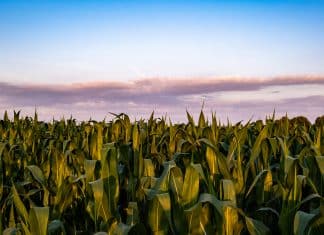Estimated reading time: 7 minutes
- This article, as part of the communal livestock farming series of articles, looks at biosecurity and managing diseases such as jaagsiekte.
- Communal wool producers can control sheep scab, which causes great losses, with regular treatment with injectable Ivermectin products or regular dipping.
- Dermatophilus congolensis is a bacterium that can cause skin infections in all animals, especially when the skin is wet for long periods of time.
- Footrot can be caused by various bacteria, and it is wise to get a veterinarian to establish which type of footrot you are dealing with. However, prevention almost always requires the use of a footbath.
- Jaagsiekte is a fatal viral disease in sheep, causing the lungs to slowly change until it looks like liver and loses the ability to fill with air.
In the June 2023 issue of Stockfarm, in the final chapter of my series on biosecurity on the farm, we looked at farming in communal areas and measures that can help keep your livestock healthy and productive. Based on that, we take a closer look at four important diseases that require the implementation of biosecurity measures in communal areas.
Sheep scab
Most communal wool producers suffer great losses due to sheep scab. The biggest problem is the fact that sheep scab mites can survive in the open (off the sheep) for seven days and then cause a new infection. This often happens when sheep are kraaled at night and when they come into contact with other flocks in the communal grazing areas.
Regular treatment with injectable Ivermectin products or regular dipping are the only methods of controlling this challenging situation. In one particular kraal, we injected the sheep up to eight times during the year and when there were ticks, we used a pour-on dip instead. This had a positive outcome with sheep producing around three times more wool than before.
Read the first article of the communal livestock farming series here.
Orf and lumpy wool disease
Dermatophilus congolensis is a bacterium that can cause skin infections in all animals, especially when the skin is wet for long periods of time.
In cattle it causes crusts and hair loss, leading to inflammation of the skin. This is called Senkobo disease. In wool sheep D. congolensis causes lumpy wool disease. At first, the lumps resemble small matchsticks extending from the skin of the sheep to the tip of the wool, but eventually the wool forms large, solid clumps. The skin can also tear when the wool is pulled off. In some cases, the infection can become inactive when there is no rain, and it may form a crust with healthy wool underneath that can sometimes turn green or brown.
In lambs D. congolensis can join up with the orf virus, leading to strawberry footrot. It is often present in the mouth lesions caused by orf and is known as scabby mouth.
Crusts may develop on the ears and face of lambs and kids, or animals in high rainfall areas. Goats that develop strawberry footrot may experience hair loss and have crusts on their backs when they remain wet for long periods. In hair sheep and goats that are kept in high rainfall areas, D. congolensis also causes eczema and hair loss. Horses may also be affected.
Treatment
- Dip or spray with 10% zinc sulphate with a bit of soap added as a wetting agent.
- Lambs can be washed with F10 SCXD.
- Inject with tetracycline LA or high doses of penicillin.
- Wool sheep should be shorn around 14 days after injecting antibiotics. Thereafter, dip the sheep with zinc sulphate.
- Strawberry footrot can be treated by scrubbing with a dishwashing sponge dipped in povidone iodine (Betadine, Oberdine).
Prevention:
- Strict biosecurity is a challenge in communal areas, but dipping wool sheep before they join the flock can delay the spread of disease.
- Cull and/or isolate cases. Sheep that develop lumpy wool are the same ones that develop blowfly strike and often also have closed faces or pleats.
- Make shearing shed hygiene a priority (clothes, hands and shears can introduce the disease).
- The best strategy is spraying the sheep regularly with zinc sulphate mixed in water or F10 disinfectant.
Read the second article of the communal livestock farming series here.
Footrot
Footrot can be caused by various bacteria, and it is wise to get a veterinarian to establish which type of footrot you are dealing with. However, prevention almost always requires the use of a footbath. Every kraal should have a footbath near the entrance so that animals can walk through it before entering the kraal.

Treatment: Let sheep and cattle walk through a 10% zinc sulphate solution (10ℓ of water + 1kg zinc sulphate + 1 tablespoon laundry or dishwashing soap) when they arrive at the kraal. Do this monthly if they are on irrigated pastures, weekly if you expect problems, and daily if you have an outbreak.
Actions to manage footrot
- Construct the footbath with a water bath right in front of it so that mud and manure can wash off the animals’ feet. Place the footbath strategically to allow for a daily treatment routine. Let the sheep stand on a concrete floor after they have been through the footbath to prevent mud contamination and removal of the zinc sulphate. If sheep enter the footbath with mud in-between their claws, or walk through mud after the footbath, the treatment will not work.
- For an individual sheep with footrot, mix two tablespoons zinc sulphate in 500mℓ of water and keep the infected feet in the mixture for five minutes. If zinc sulphate is unavailable, apply F10SC or Savlon, according to instructions.
- Put lame cattle and sheep through the race after all the other animals have been through it. Keep them there for five to ten minutes and trim the feet, especially the folded wall that keeps the sole wet. Inject the animal with antibiotics – tetracycline LA will work in most cases, and the use of alternative antibiotics can be discussed with your veterinarian. If the animal has an abscess, spray with iodine and purple aerosol.
- It is also important to treat an animal for pain. Three to five disprins can be inserted into the rectum, or injectable products such as Metacam or Ketofen, which can be supplied by your veterinarian.
- Check for ticks as a cause of footrot. Dip can be added to the footbath to control the ticks and lice present on feet.
- Keep in mind that copper sulphate and formalin in the footbath cause tissue damage and delay healing. Zinc sulphate is a safer option.
Read the third article of the communal livestock farming series here.
Jaagsiekte
Jaagsiekte is a fatal viral disease in sheep, causing the lungs to slowly change until it looks like liver and loses the ability to fill with air. The scientific name of the disease is ovine pulmonary adenocarcinoma (OPA) and it mostly occurs together with a very similar disease called maedi-visna or ovine progressive pneumonia (OPP).
The incubation period of jaagsiekte is slow and most cases are seen in sheep that are older than three years. However, Pasteurella pneumonia can complicate the disease and speed up the appearance of symptoms. There is currently no vaccine available to prevent jaagsiekte, but the use of Pasteurella vaccine (in combinations such as Multivax-P Plus or One Shot Ultra) can slow the disease down.
The disease causes up to 10% of the older ewes to die and is more severe when sheep are kraaled overnight. Lambs usually contract the disease by drinking from the ewe’s udder. An indication of maiden ewes being infected with jaagsiekte is the presence of swellings in the udder. Sheep can also contract the disease from other sheep that cough, and it therefore occurs more frequently in flocks that are kraaled overnight.
Diagnosis: Sheep that cough, and/or lose condition and have fluid running out of the nose when the back is lifted up (the wheelbarrow test).
Controlling jaagsiekte
- Slaughter all coughing animals as soon as possible.
- Vaccinate every six months against Pasteurella.
- If possible, close the flock and retain replacement rams only from full mouth, as well as older ewes that have not developed the disease.
- It will be extremely difficult to manage this disease in communal flocks; however, eradicating it is possible. Whenever possible, isolate the flock, slaughter all animals, or start a separate clean herd, crossbreed the infected herd and sell all progeny. – Dr Johan van Rooyen, Steynsburg Animal Hospital
For more information, contact Dr Johan van Rooyen on 082 463 3087, Wandile Khave on 066 303 6271 (WhatsApp) or email veearts.sdh@nokwi.co.za.






